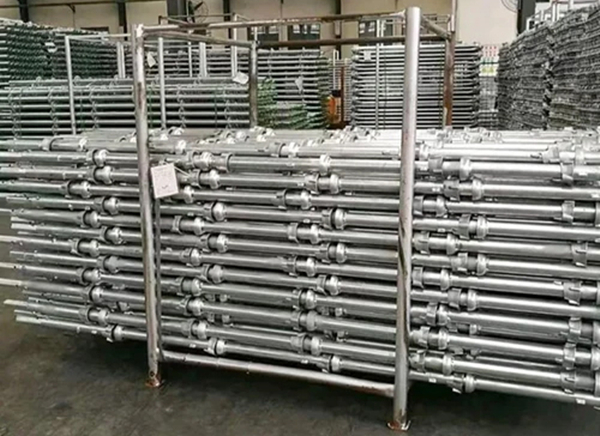How to Ensure the Cuplock Scaffolding Quality During Transportation and Storage?
1. Transportation
Proper Packaging
The cuplock scaffolding components should be well-packaged to prevent damage during transportation. Tubes can be bundled together using steel bands or plastic wrap. For example, vertical tubes can be grouped in bundles of a suitable size, say 10-20 tubes per bundle, and the ends of the tubes can be protected with plastic caps to prevent scratching and denting. Cuplock joints and other small components like pins and fasteners should be placed in sealed plastic bags or boxes to avoid loss and damage from moisture and impact.
The packaging materials should be of good quality and strong enough to withstand the rigors of transportation. Cardboard boxes used for packing smaller components should have sufficient thickness and strength to protect the contents. For larger components, wooden crates can be used if necessary, especially for long-distance or rough-terrain transportation.
Loading and Securing
During loading onto trucks or other transport vehicles, the scaffolding components should be loaded carefully. Heavy components such as bundled tubes should be placed at the bottom of the load to provide a stable base. The loading should be done in an organized manner to prevent components from shifting during transit. For example, when loading horizontal and vertical tubes, they can be arranged in a way that they interlock or are held in place by other means such as wooden blocks or straps.
Once loaded, the components must be properly secured. Straps or chains can be used to tie down the load to the vehicle's frame. The tension of the straps should be adjusted to hold the components firmly without causing damage. For example, using ratchet straps with a suitable load - bearing capacity, and ensuring that the straps are passed through the correct anchor points on the vehicle to prevent the scaffolding from moving during transportation.
Vehicle Selection and Route Planning
The choice of transportation vehicle depends on the quantity and size of the scaffolding. For large-scale transportation of cuplock scaffolding, flat-bed trucks are often a good choice as they provide a wide and stable platform. Enclosed trailers can also be used to protect the scaffolding from the elements and reduce the risk of theft.
Route planning is crucial to avoid rough roads and areas with a high potential for accidents. If possible, choose routes with smooth pavement and fewer potholes. This can reduce the impact and vibration on the scaffolding during transportation, minimizing the risk of damage to the components.
2. Storage
Storage Location
The storage area for cuplock scaffolding should be dry and well-ventilated. Moisture is the enemy of scaffolding components as it can cause rust and corrosion. A warehouse with a controlled humidity level is ideal. If an outdoor storage area is used, it should have a roof or cover to protect the scaffolding from rain and snow.
The storage location should also be free from chemicals and other corrosive substances. Storing scaffolding near areas with chemical spills or industrial emissions can lead to accelerated corrosion. Avoid proximity to sources of saltwater, such as coastal areas, as the salt in the air can corrode the metal components.
Stacking and Organization
When storing scaffolding components, they should be stacked in an organized manner. Vertical tubes can be stacked vertically in racks or on pallets to prevent them from bending or deforming. Horizontal tubes can be stored on shelves or in bundles, with proper separation to avoid scratching and damage to the surface. Cuplock joints and other small components should be stored in labeled containers or bins for easy identification and access.
The stacking height should be carefully considered to avoid overloading and crushing the components at the bottom. There should be enough space between the stacks to allow for air circulation and easy movement of personnel and equipment for inspection and retrieval.
Regular Inspection during Storage
Periodic inspections of stored scaffolding are essential. Check for signs of rust, corrosion, and damage such as dents and scratches. If any signs of corrosion are detected, appropriate measures such as cleaning and applying anti-corrosion coatings should be taken immediately. Inspect the integrity of the packaging of stored components, especially for small parts like pins and fasteners, to ensure they are not lost or damaged.

评论
发表评论